Coffee with Kelly Cline
If there was one thing (and there were many!) I learned from my experience meeting with MatthewA, it’s that I am not a particularly good interviewer. Particularly when I’m surrounded by food and cameras and dishes and linens and people making gorgeous images, I tend to just get lost in the moment and forget the fact that I’m supposed to be asking questions. So, when I scheduled a chat over coffee with Kelly Cline, one of Seattle’s up and coming food photographers, I knew I’d need to do a bit of advanced preparation in order to avoid just oooing and ahhing over her natural talent. Kelly and I had already shared several conversations over email, and her fun and energetic personality meant that I was going to have to work hard to keep our interview from turning into two hours of foodie girl talk. Especially since the LightSource interview that was recently podcast gave me so much insight into her work already. So, I planned out my questions, printed them out and even remembered to bring them with me! Of course, that didn’t stop us from sounding like teenage girls at the mere mention of truffle oil or one of our favorite food photographers. I still tended to get swept away in the conversation, so our time felt more like sitting down with a new friend than an interview. But, somehow through that, I did manage got get through all of my questions, and learned a ton about Kelly in the process.
While there are many food photographers who churn out gorgeous images, Kelly Cline’s images are different. Kelly loves food and has a unique ability to show that visually with light. Maybe that’s because her food is natural and never faked. Partly driven from her belief that food that will look the most beautiful and delicious on film is food that is beautiful and delicious in real life and partly driven by practicality (How can I tell my husband that he can’t eat that gorgeous steak that I spent good money on?), Kelly avoids those well-known food stylist tricks that you read about like using glycerin for water droplets or mashed potatoes for ice cream. Her food is simply good food. The ice cream she shoots looks like ice cream because it is. She’d rather make a feast of three turkeys that are completely edible to get the perfect shot, rather than partly cook one and paint it with Kitchen Bouquet and throw it in the trash.
Which brings me to another key difference with Kelly’s work… not only is she the photographer, she is also the food stylist, prop stylist and recipe author. Working that closely with every aspect of the process presents challenges, but also means that Kelly deeply understands the food and is able to bring that to life in her photos. Each shot may only take a few minutes to capture, but that represents hours and hours of Kelly’s planning and prep time. As a result, a good day will yield only four or five final shots. But those few photos will be fresh and full of life as Kelly collapses on the couch exhausted.
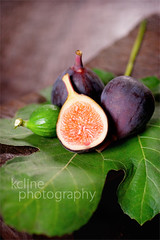
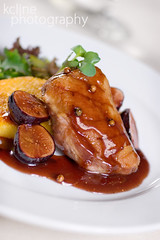
If this sounds familiar, it may be because Kelly’s process is more like that of a food blogger (which she is too) than a typical professional photographer… she wakes up excited about an idea of what to cook, maybe based on one or two seasonal ingredients or inspired by one of her many cookbooks (The Asian Cook by Terry Tan being one of her favorites), and gets busy creating. Her studio is her (tiny!) kitchen and a room in her house in West Seattle that happens to get beautiful eastern and western light. She can spend hours lost in cooking magazines, drooling over the photos. Her props are finds from Value Village and garage sales. She (along with her friends and family) actually eats what she shoots. It’s just that she is much better at it than most of us. And, she’s managed to turn it into a career through a combination professional assignments and stock photography.
Kelly is largely a self-taught photographer. While she started shooting at around 13 and taking a photography class here and there, she has no formal education. Instead, she has learned through experience, mimicking shots she found in magazines and cookbooks and practicing over and over again until she got the light and focus just right. She’s brought along one of her first food shots to show me how far she’s come, a blurry underexposed shot of cupcakes that look like they are a mile away and we share a laugh at how far she’s come. When she met her husband, a portrait photographer, she began to discover that food photography can benefit from many of the same lighting techniques, especially when it comes to using natural light and bouncing it to create just the right highlights and reflections.
As she starts to talk about light, Kelly starts to get notably more excited. She describes one scene of grapes she was shooting for a client. She washed the grapes with a soapy water, leaving some of the soap on the grapes to help hold the water in droplets. Using a silver bounce and natural evening light, the grapes simply sparkled. “The light was like diamonds,” she explained. “Plus, all I had to do was just rinse them off when we were done shooting and we could eat them.” As we start talking about other photographers that Kelly admires, this theme of light continues. Some of her favorites, Antonis Achilleos, Matthew Kline, Noel Barnhurst and Iris Richardson, all manage to capture this same brilliance of light.
Of course, Kelly also sees a lot of food photography that makes her shudder. I asked what she thought the major problems with most food photos, both amateur and professional. She’s not a fan of faked food shots that tend to look plastic and too perfect to be real. She even criticizes her own work at times, calling out one or two photos that she spent time adjusting the baby basil leaves just so to catch the light, only to decide to reshoot later because they looked unnatural. She also sees a lot of problems with exposure, both under and exposing images. Her own tendency is to over expose, a habit she’s developed from too many images that came out under exposed. Once again, she easily laughs at her own tendencies to do this even though she knows better. She also cringes with presentations that are overly complicated or include irrelevant props. Why would someone put a potholder into a shot with fresh fruit? This is one thing that I never see happen in Kelly’s photos… her composition is always elegant and simple. The food provides the energy and color and the props only help make the food the focal point. To bring more life or action to the shot, Kelly will play with the light or the angle, instead of unnecessary props.
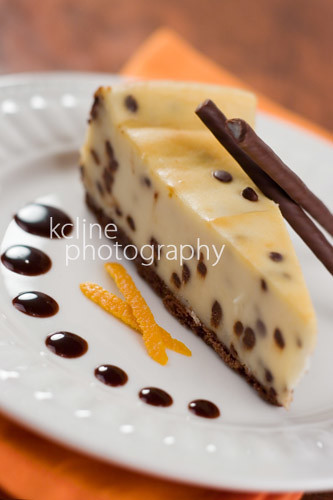
But, the biggest issue Kelly sees, particularly for new photographers, is properly setting and correcting white balance. As a result, many of the food photos on Flickr that she sees have color casts to them. Kelly avoids this problem by shooting a white card before each shoot. This image is then used to set the white point, and it’s simple to adjust the next images from that curve. Regardless of the type of light, her whites are neutral. If she wants to make the image warmer or cooler, she is in control of exactly how much.
The two of us proceed to geek out most of the rest of the conversation, talking about DOF (shallow!!! but not too shallow!), lenses (we both love the 50mm), camera bodies (pining for a 1DS Mark II) before we both realize that our parking is about to expire and decide to call it a day.
Later, Kelly emails me, saying that she can’t believe that she didn’t mention “the bane of food photography,” on-camera flash. “It’s terrible,” she says. “Every on-camera flash should be ripped off of it’s camera because it makes the ugliest and unflattering light.” She also notes that one of her other sins is, on occasion, simply pointing and shooting without much thought to the composition. “I don’t know why I do it… maybe boredom or maybe sheer laziness… however you slice it I die a little inside when I do and I die a little more when those shots come out good because I know I didn’t really do anything to get it and that it was pure luck.”
Planned successes or not, it’s hard not to be impressed with Kelly’s body of work and I think her natural style is very representational of the direction of food photography. There is beauty in the honesty of natural styling that is lost when the food is forced to be something that it isn’t. A great food photographer and stylist knows how to bring out the flavor without draining the life out of the food. Kelly gets that and her photos are all the more mouthwatering because of it.
In addition to her online portfolio, you can find Kelly’s work on Flickr and iStockPhoto.
Technorati Tags: Food, Food Styling, Photography
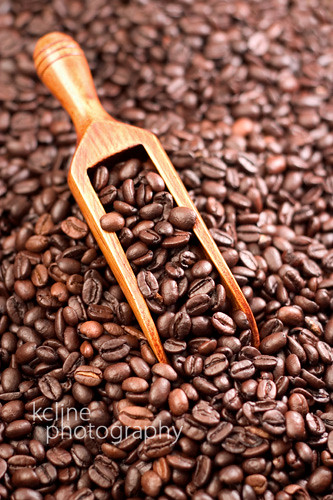
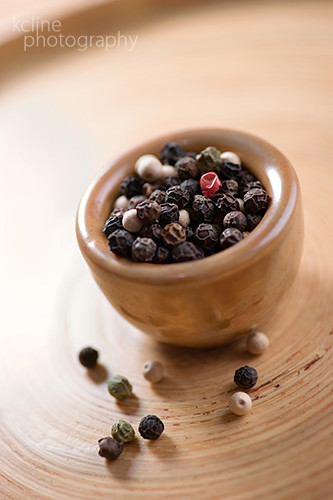

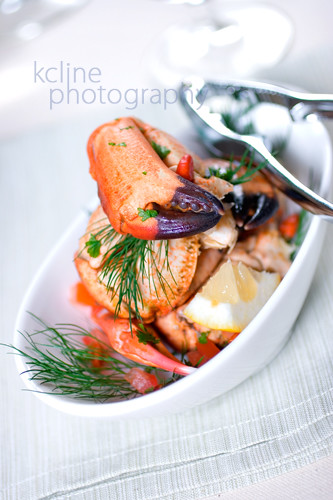
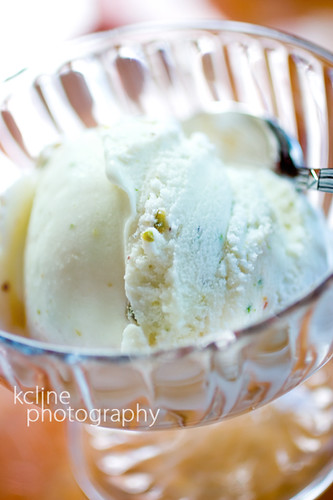
Thanks Lara, this was a really interesting read, just what I needed today! I love that Kelly Cline takes photos of real food because I really think that it is important to convey the ‘soul’ of the food, not just take a perfect picture that often is flat and a bit boring! keep up the great work, I enjoy it so much!
Thank you for being the Food Geek that you are L 🙂 I walked away from our visit wanting more. We absolutely must take a day trip out to that place I told you about with the baskets and shelves of antiques! You will go absolutely nutty 😉
I can’t wait for the next time you grace me with your wonderful Food Geeky presence! It was soooo nice to sit and talk with someone who “gets it”. You are great, keep up the great service you are doing to the foodie community 🙂
And in the meantime, aforementioned husband gets fatter and fatter… 🙂
I hear you Rasmus – I’ve been running more this year than any other year in my life and I still can’t keep ahead of my waistline with L’s cooking!
As always… fabulous information. Thank you!
Wonderful..wonderful story here. Thank u so much L.
I just wanted to pop back in here really quick to add something important.
There is a point in this interview where I talked about mimicking to learn. I want to make it clear to anyone who is reading this that it is fine to mimick to learn but it is NOT okay to turn around and say that is “your shot” or even sell it.
If you are shooting to learn, do just that. Use it as a learning experience and file it away with your other successes, but never call it your own if you are mimicking everything within the shot from props to composition to lighting. You will run the risk of landing yourself a copyright infringement lawsuit, and that is ugly business.
If you mimick to learn and you want to post it to your blog or to Flickr, make sure that you give proper and full credit to the original Photographer who inspired your mimicked shot.
In my days of learning, I tended towards trying to get the lighting, composition and colors right in a shot not by making a direct or exact copy of the shots that inspired me, but by doing my own thing with the inspiration I received from those images. If I saw a bowl of kiwi fruits that were lit in a special way, I would try that with some other type of prop. Never a full on exact duplicate of what I was seeing.
It’s okay to be inspired, that is what makes you grow as an artist. If all you do is copy what you see, then all you will be a is Copy Cat who can not think of an original idea for themselves. Inspiration allows you to grow as an artist, copying will only stifle you.